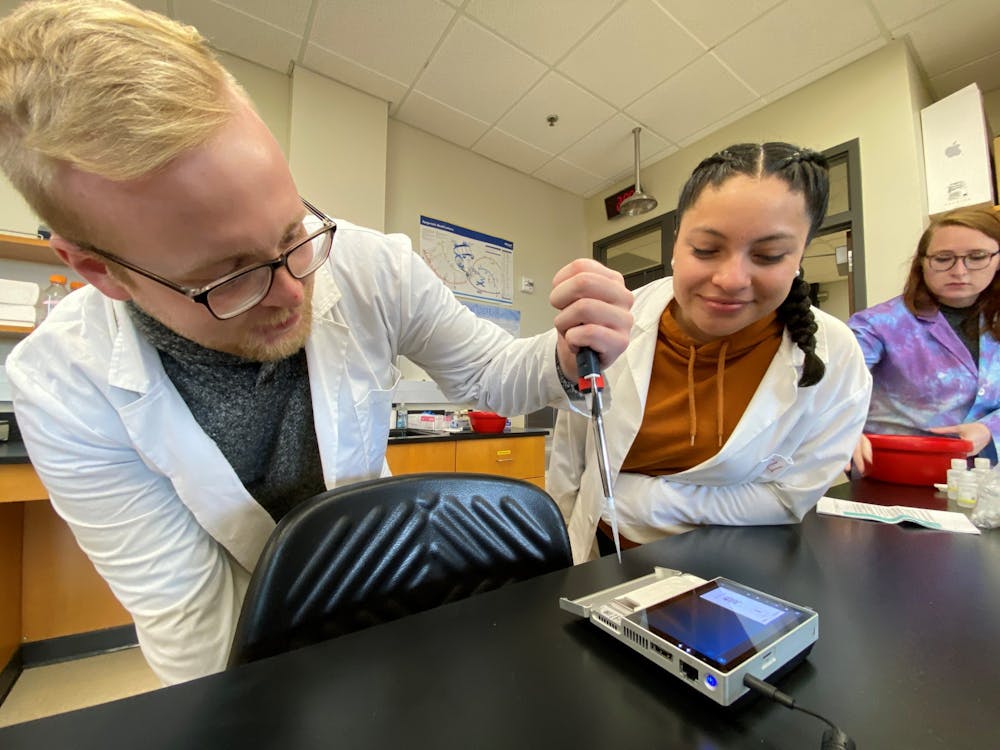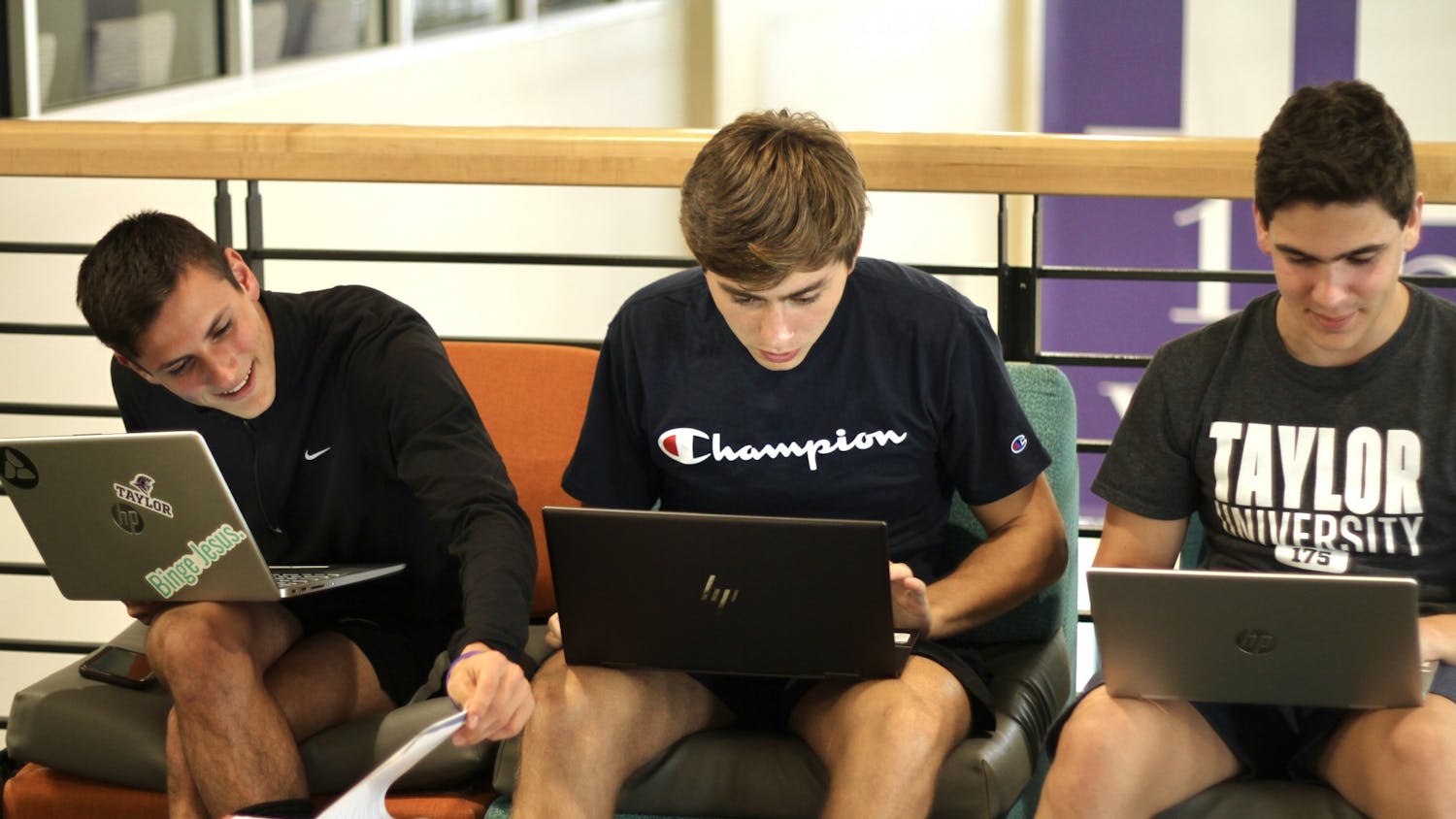The biology department’s most recent achievement has arrived in the form of a small black box — no bigger than a large iPhone.
The new DNA sequencer, though underwhelming in appearance, represents months of effort and a wealth of future opportunities for Taylor staff and students.
In a nutshell, sequencing DNA involves determining the order of the four chemical building blocks present in every DNA strand (nucleotide bases A, C, G, T). Sequencing technology acts as a translator that interprets these genetic codes and allows further study of an organism’s make-up. Having sequencing technology on-hand opens the door to new research opportunities for Taylor’s scientific community.
“I had already been involved in the research for a portion of the fall 2022 semester, so when we heard that we received the grant that Dr. (Sarah) Justice and Prof. (Elizabeth) Hasenmyer had worked really hard for, it felt like a major win,” junior Grace Kintner said. “This whole project has become a labor of love for a lot of us, and hearing that we had received the money was really exciting. Immediately, we were asking, ‘When do we start?’”
Assistant Professors of Biology Elizabeth Hasenmyer and Sarah Justice began the purchasing process in August 2022 when they applied for funding from the Women’s Giving Circle — a group of women combining their resources to support Taylor academics. The department was awarded a grant from the Giving Circle in October, and the technology was delivered in February 2023. The equipment has since undergone an extensive troubleshooting process.
Once the technology is fully set up, virtual training sessions provided through Oxford Nanopore Technologies (the company responsible for developing the sequencing technology) will teach faculty and students how to interact with the sequencer.
Justice emphasizes that the sequencer is a big win for a school Taylor’s size.
“I did my Ph.D. at IU School of Medicine, and they have rooms of (sequencers),” Justice said. “So they're common at (larger) universities, but not universities of our size.”
The benefits of this purchase are myriad.
As a molecular biologist, Justice notes that the sequencer was one way to adapt her expertise to something attainable. An important but manageable piece of equipment, the sequencer allows for a variety of experimentation with state-of-the-art technology.
Additionally, students interacting with the sequencer are now able to develop specific skills they can use post-college. Two students will have the opportunity to work with the sequencer 40 hours a week for eight weeks this summer. As one of those students, Kintner said that they will be mapping and documenting plants digitally — tracking similarities between the plants based on location and exposure to sources of nutrients.
Justice highlighted educational experiences like this as one of the sequencer’s most compelling “pros.”
“We particularly wanted to do it … for the educational standpoint, so that our students can leave here saying, ‘Yeah, I've done DNA sequencing and not just, like, sent my samples off — I've actually used the sequencer,’” Justice said. “And so for them to go on to … grad school or work in a lab, to already have done that is a pretty great skill set. And that will set the students apart too.”
The sequencer also brings with it a financial advantage. While it is more cost-effective for Taylor to send off smaller sequencing samples for testing, larger projects will now be cheaper for the biology department to perform with their own sequencer.
On top of these benefits, the sequencer will advance one of the department’s biggest projects.
Taylor’s North American azaleas — most noticeable in the late spring, when they bloom in pink, yellow, orange and white — are unique to their species, and the department’s primary focus for sequencing efforts. The genetic code of these flowers, which is currently unknown, is the desired end result.
“We have these crazy plants on our campus that normally grow on mountains, and they kind of get oranges thrown into them, right? I don't think anyone realizes how super cool they are,” Justice said. “But yeah, (this project) really highlights how we have this really cool thing on campus that was worth funding and is worth actually trying to take care of.”
Justice notes that students also have the opportunity to participate in every stage of the project — weeding the azalea beds and maintaining the organism all the way to data analysis with the sequencer.
While securing the sequencing technology is a significant step forward, it marks the beginning of a long research journey. The sequencing process itself is both extensive and expensive.
The biology department is currently working on securing additional funding for the necessary equipment, consumables and chemicals — aiming for $30,000 of additional grant funds that will allow for further sequencing.
“We have enough right now to sequence 12 of the plants we have,” Justice said. “We have 406 plants, but we don't think we need to sequence all of them. I think we're aiming for about 36.”
Additional funding will allow the department to make full use of their new DNA sequencing technology — entering even further into research that will contribute to ongoing conversations in the academic community.
“DNA is the instruction used for creating all living things,” senior biology major Jonathan Noonan said. “By looking at how the code is arranged, we can learn new things about organisms that (weren’t) previously known. I can see this sequencer being used in several ways in our department, as many organisms are actively being sequenced in the field of science today.”





